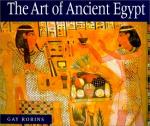|
This section contains 1,138 words (approx. 4 pages at 300 words per page) |

|
Purpose. Scribal education was designed to train supervisors for overseeing work in administration, construction, and temples. In most periods scribal education was available only to male children of the elite. The only exception was during the Middle Kingdom (circa 1980-1630 B.C.E.) when a shortage of scribes led to the possibility of upward mobility. Some sort of scribal education was also available to artisans at Deir el Medina. Egyptian education was available to the sons of foreign rulers during Dynasty 18 (circa 1539-1295/ 1292 B.C.E.). Thutmose III (circa 1479-1425 B.C.E.) used scribal education as a means to "Egyptianize" conquered foreign rulers. In all periods, scribal education was the key to success in Egyptian society.
How Many Scribes? Though some scholars have estimated that only 1 percent of the Egyptian population was literate, this number probably applies only to the...
|
This section contains 1,138 words (approx. 4 pages at 300 words per page) |

|




